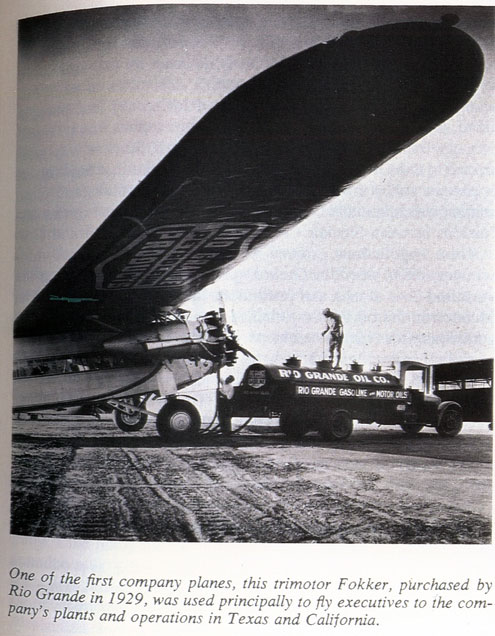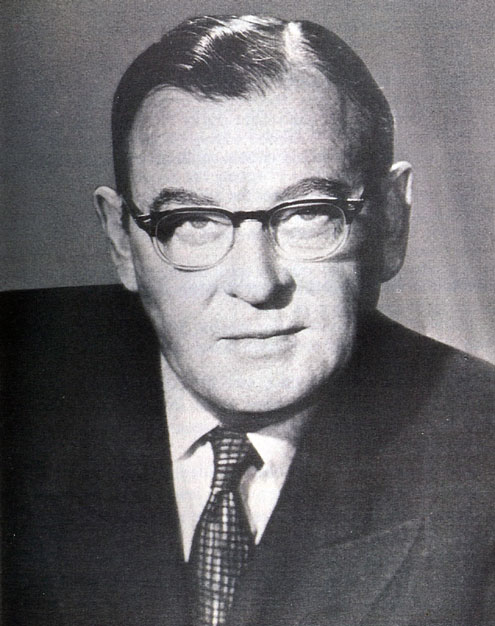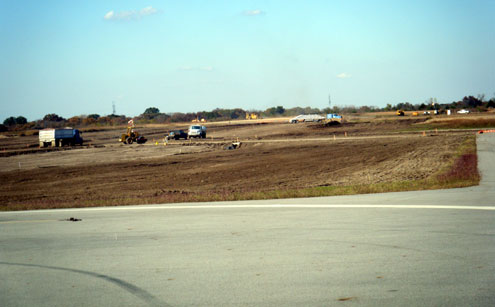 |
Front Page
Charles Jones and his airport
By Tim Davis
Jan 14, 2010
In my previous article on the pre-World War II history of Jones Field, I noted that the goal of building an airport in Bonham got a huge shot in the arm in late 1928 when former Bonhamite Charles Jones, at the time a successful oil company executive, gave the city a $10,000 gift – roughly equal to $100,000 today – towards the project. He stipulated that he wanted the airport named in honor of his late father, George Jones.
With all of that in mind, it is easy to assume that Jones’s gift was given strictly out of benevolence. Such an assumption is indeed harmless, especially when one considers that the airport has been of good service to the community for eighty years.
Nonetheless, I firmly believe that Jones may have had a hidden reason for wanting an airport in Bonham.
By the late 1920s Charles Jones was vice-president and treasurer of the Los Angeles-based Rio Grande Oil Company. (By mid 1937 Rio Grande became the Richfield Oil Corporation, with Jones as president. In the late 1960s he was one of the key architects of the merger with the Atlantic Refining company that created the Atlantic Richfield Corporation, best known by the acronym ARCO.)
Not to be outdone by other large companies, in early 1929 Rio Grande purchased an impressive Fokker tri-motor plane to fly its executives around the country. For Charles Jones and his like, the days of taking cars and trains to faraway places were over.

However, landing in Bonham for personal business – Jones still had immediate and extended family living here, including his mother and sister – was impossible without an airport. Thus the gift in late 1928, coupled with matching funds from the City of Bonham.

Adding visual fuel to the fire, on April 6, 1929 Jones had the Rio Grande’s new plane carry him and his family, including his mother, Benny, over Bonham. That day’s Bonham Daily Favorite carried a big front page story about the flight. Jones’s main message was easy to understand: I would like to stop and visit, but I can’t because the airport isn’t ready. In other words, pull together and finish the job.
And that’s exactly what officials in Bonham did. In a letter dated May 23, 1929, the law firm of Cunningham & Lipscomb informed Jones that the City of Bonham had secured a tract of land north of Bonham from a Mr. L. C. Fuller for the building of the airport.
Mayor L. K. Crawford also kept Jones informed of progress on the project. In a letter dated June 14, Crawford noted that the proposed site “lies almost exactly two miles from the Court House on the Ivanhoe Road.” He further noted that it “is well drained and the soil excellent for the purpose.”
In another letter dated October 8, Crawford informed Jones: “It would do your heart good to see the progress we are making on the Air Port. Have had Jim McDowell out there for nearly a month with twelve mules and all the men he needed and it’s getting to be a beautiful sight.”
Crawford also noted that the new field was regularly visited by dare devil pilots known as barnstormers. He wrote:
The Barn Stormers are with us. They have been coming since the work started and can’t see why some of them have not killed themselves landing on the freshly plowed ground. Hardly a day passes without a Plane flying over, circling the field and looking over the work we are doing. Don’t know where they come from. Four or five have been here today.
Crawford stated that he hoped for a big grand opening on Armistice Day in November, and that Jones should join them. In reference to the planned celebration, Crawford noted that everyone wanted Jones “here at that time with your big Plane [Rio Grande Oil’s Fokker tri-motor]. You would be surprised at the interest people are taking in this field as the work progresses and when the Rio Grande settles down and you step out, This Old Town will go wild.” He further implored Jones to not “let a little thing like an Oil Well deprive us of having you here on that day.”
Despite Mayor Crawford’s pleadings, on November 6th Jones cabled him stating: “I regret the conditions which preclude the possibility of my being in Bonham November eleventh. I am sending the ship [the Rio Grande plane] and it will reach Dallas Sunday and fly to Bonham Monday morning.”
It’s just as well that Jones could not be in Bonham for the big grand opening; the event was canceled due to heavy rains the previous weekend. Nonetheless, Jones Field soon became quite a busy place with many flights going in and out. Moreover, Charles Jones now had a place to land the “big Plane” when he wanted to return home.
And return he did, several times, such as the sad occasion of his mother’s death in early November 1945.
And there was an important business meeting in late 1955. Jones, anxious to protect Richfield oil investments in Egypt, was finding it hard to meet with any officials of the Eisenhower state department. President Eisenhower, one of Jones’s golf and card playing buddies, was recovering from a heart attack. And his Secretary of State, John Foster Dulles, was out of the country.
In his book entitled From the Rio Grande to the Arctic: The Story of the Richfield Oil Corporation (Univ. of Oklahoma Press, 1972), Jones wrote: “Time being of the essence, I flew to Bonham, Texas, and visited Speaker of the House Sam Rayburn at his farm home.” Unfortunately for Jones, Mr. Sam could only advise him to be patient until an Eisenhower official could see him.
And perhaps there were many subsequent visits to Bonham prior to Jones’s death in December 1970, if for no other reason than to visit his sister and brother-in-law, Madeline and John Arledge.
Jones Field continues to be a work in progress. A few years back the runway was extended to 4,000 feet, enabling it to accommodate some impressive turboprop planes. And, as this piece is being written, finishing touches are being put on a new parallel taxiway, a staple part of any airport that wants increased traffic.

The days of big crews of men and teams of mules are long gone; the dirt is now moved by a few men and large equipment bearing names like CASE, Caterpillar and Ingersoll-Rand.
Charles Jones would no doubt be impressed.
Black and white photos came from Charles Jones’s book, From the Rio Grande to the Arctic, with copyright permission from the University of Oklahoma Press.
Big thanks to Jacqueline White for sharing her copies of correspondence from 1928-29, all of which is on file at the Fanin County Historical commission, between Charles Jones and Bonham officials.
Tim Davis teaches at Bonham High School.